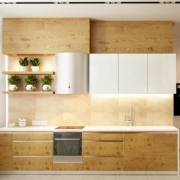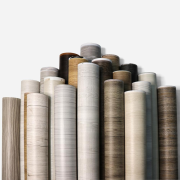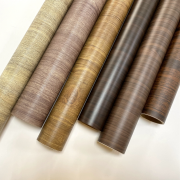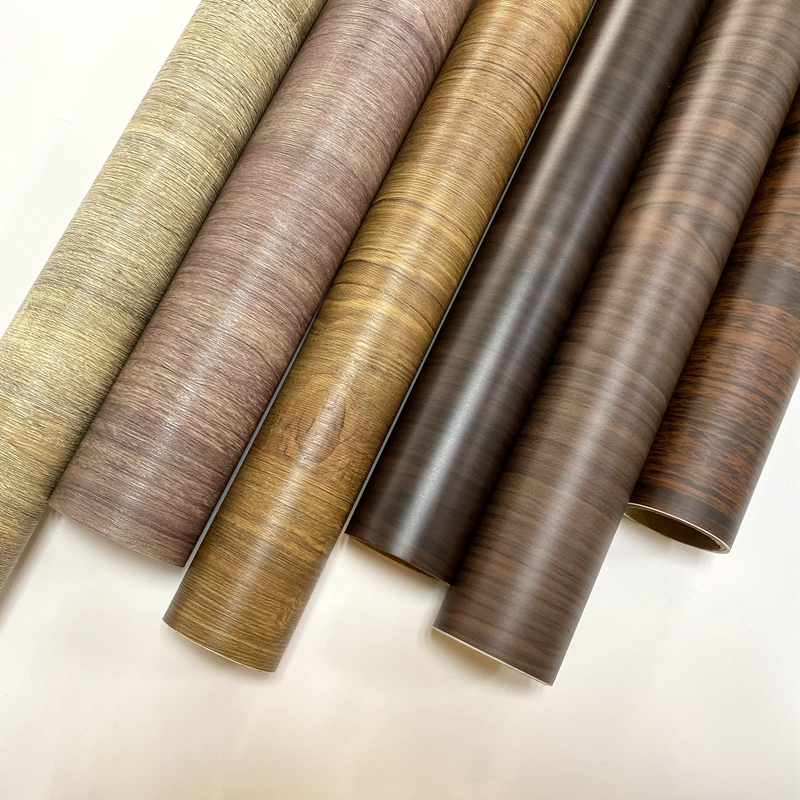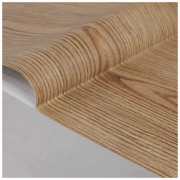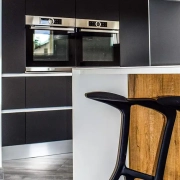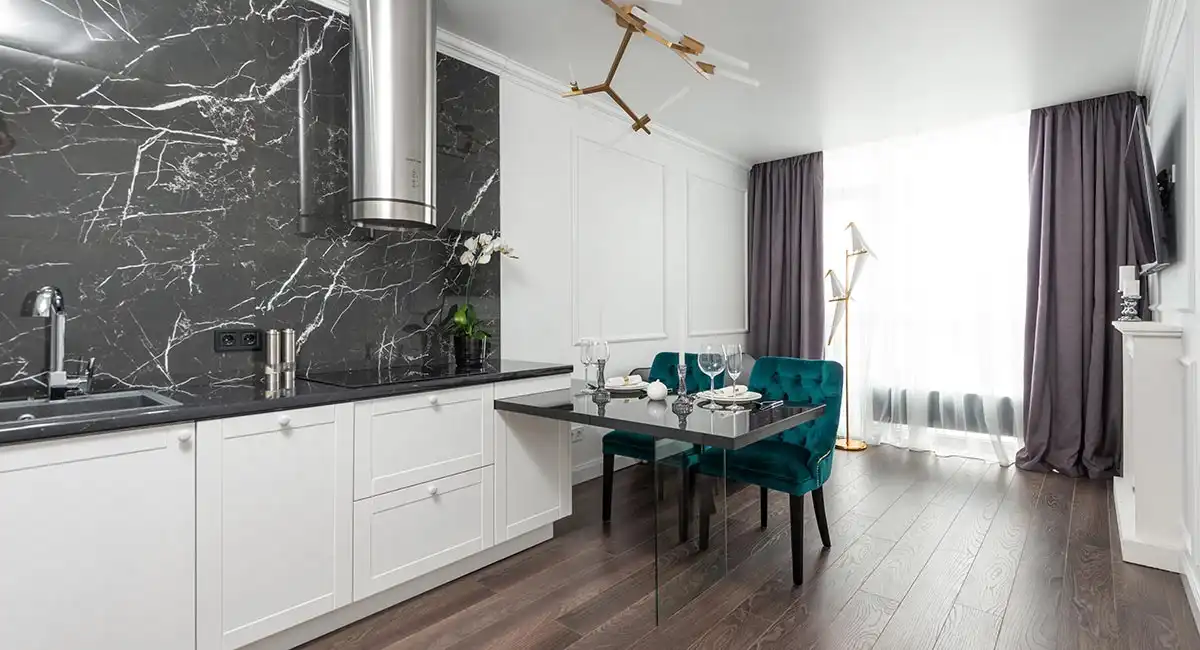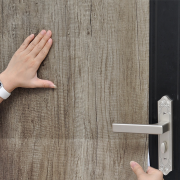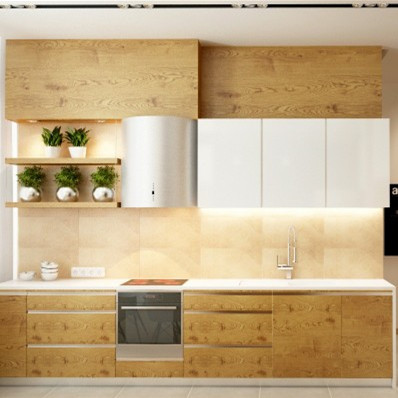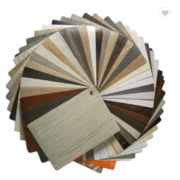How PVC Foil Can Transform Your Kitchen and Bathroom Spaces

It is important to choose the right type of PVC foil to use in your kitchen or bathroom. These products come in different shapes, sizes and designs, but you can easily create a unique look with a few tips.
Peel and stick countertops
Peel and stick countertops are a quick and easy way to update your kitchen or bathroom. These countertop materials are self-adhesive, so they don’t require you to hire a contractor. You can install them in just a few hours, and they come in a variety of colors and styles.
The material itself is made of vinyl and a layer of adhesive. You can buy it in full-sheet or tile varieties. It can be used on counters and on the base of a cabinet. If you’re using it for a backsplash, you’ll want to choose a quality product.
Some peel and stick products also come with a film or cloth that makes the surface smoother. Others are waterproof, so they can be applied to bathrooms or any other area that gets wet.
In general, there are three types of adhesives used in peel and stick countertops. One type is called double-sided tape. This has a sticky backing, so you can use a hot glue gun to hold it in place.
Another type is a contact paper. These are thin sheets of vinyl with a decorative pattern on one side. They are easy to apply, and they have a glue on the other side. However, they may not stick well to plywood.
For the best results, you’ll want to apply oil-based primer to your counters. Let it dry according to the manufacturer’s directions. Also, you’ll need to wait at least 24 hours for the adhesive to set. Once it’s fully dry, you can move on to the next step.
Peel and stick countertops are a good option if you’re on a budget. However, you’ll want to consider the cost, durability and other features before you make a decision.
Vinyl splashback tile stickers
When you want to transform your kitchen or bathroom but don’t have the time or the money to install new tiles, vinyl splashback tile stickers are a great solution. They’re inexpensive and easy to use. You can even choose to add a pattern to your tile stickers for an extra bit of texture and design.
Vinyl backsplashes are made from vinyl materials that mimic real tile or other materials. Unlike other options, they don’t require grout or caulk. They’re also water-resistant, making them a perfect option for your bathroom. And, they’re easy to remove.
Vinyl peel and stick backsplashes come in a variety of colours and patterns. Some have a three-dimensional feel, while others have a classic look. There are even peel and stick backsplash tile designs that are made to mimic wallpaper.
Using vinyl tile stickers is a great way to hide old, dingy tiles. They’re also a great solution for spaces that need a little extra help looking presentable. Peel and stick backsplash tiles can be removed and replaced easily, and they’re durable enough to last for years.
If you’re considering using vinyl stickers in your home, you should make sure you get high quality products. The cheaper products don’t have as much depth as real materials, and can make your space look cheap. It’s important to prep the surface you want to cover before applying your stickers.
Tile stickers can be used in bathrooms, and they’re also useful for covering up awkward areas. Just be sure to carefully cut around any obstacles. This will ensure that your sticker is shaped properly.
Make sure you buy your tile stickers in packs of 10. You don’t want to have to replace them too often.
3D wall decal stickers
If you want to revamp your kitchen or bathroom and are looking for a little bit of fun, PVC foil 3D wall decal stickers are a great way to do it. These decorative pieces can be purchased in many different designs, from a simple black and white scheme to more colourful patterns.
As a result, you are sure to find a design that suits your taste and your home. For the most part, wall stickers are a cheap and convenient way to upgrade the look of a space. You can easily remove the sticker without damaging the wall, and they can be applied to smooth surfaces.
To get the most out of your wall stickers, you’ll want to pick a few key elements. For example, you may want to pick out the best colour for your walls. Choosing a well-matched set of wall stickers for your kitchen and bathroom can improve the visual appeal of your rooms, while helping to create a more comfortable atmosphere.
You’ll also want to make sure that you purchase the right kind of PVC foil 3D wall decal stickers. A good quality product will be water proof, stain resistant and easy to install. It will also remove easily and leave no sticky residue behind.
As you might expect, choosing the wrong wall sticker can make a space look worse than the last. When you do decide to purchase, make sure that you read the fine print on your package, so you know exactly what you’re getting.
You should also consider the size of your wall. Stickers come in many different shapes and sizes. For a small room, a vertical design is a good fit. Alternatively, you can choose a larger sticker for a more spacious space.
Exposed pipes
If you want to do something really bold and impressive with your kitchen or bathroom, PVC foil is a great way to go. Not only will it make your room look a lot more stylish, but it can also be used for a longer lasting design.
There are a few different types of PVC foil, but the best one for your project will depend on the type of flooring you have in your home. For instance, if you have a patterned floor, then using a smooth PVC foil may be the best bet. Regardless of what type of flooring you have, however, the adhesive properties of the foil are excellent.
You can find the best PVC foil to meet your needs at Anka Dekor, which is the best supplier of PVC films in Turkey. They even offer a free PVC film sample for you to try out!
Aside from the PVC foil, there are other ways to make your bathroom or kitchen look and feel spiffy. One of the simplest is to use a pedestal sink. This is a clever way to hide your plumbing and it is also an efficient use of space. Also, keeping your thermostat at a constant temperature of about 55 degrees F will help prevent your pipes from freezing over.
You can also make your bathroom look fancy by installing a bookshelf. You can also try a few more ambitious projects like covering your drywall with a stylish stretch ceiling. The best part about this is that it’s very simple to do.
While you are at it, consider hiding your wires with the drywall or tucking a fan under your cabinet. In fact, a fan can circulate warm air so you won’t have to worry about the pipes freezing over.
6 types of kitchen layouts
Whether you’re renovating or building a new home, you’ll need to know what kind of kitchen layout to choose. Your kitchen layout should be the most functional and efficient. It can help reduce footwork, maximize storage, and keep everything running smoothly.
The working triangle design principle can help you optimize your space. The basic work triangle includes the sink, refrigerator, and stove. However, in smaller spaces, it may not be feasible to follow this rule. In this case, you can consider the one-wall kitchen layout.
These kitchen layouts allow you to place all the major appliances, including the refrigerator, sink, and stove, on one wall. This allows you to open up the rest of your space, and leave three sides of your kitchen free for other uses. You can also add shelving above the base cabinets for extra storage.
If you live in a studio apartment or a small house, a single wall layout might be the best option for you. You can also create a clean, linear aesthetic with this type of design.
For larger homes or open concept spaces, a U-shaped kitchen is a great choice. It offers ample counter space and a comfortable work triangle. A kitchen island is a perfect addition to any U-shaped kitchen.
If you’re looking for a more contemporary design, you can go for a L-shaped kitchen. With this type of kitchen, you have the opportunity to build taller cabinets and make the layout more modern.
When you choose a kitchen layout, you need to consider your family’s needs. If you’re planning to have multiple cooks, a kitchen that is too large could be too crowded. One-wall kitchens are also a good choice for smaller families.

